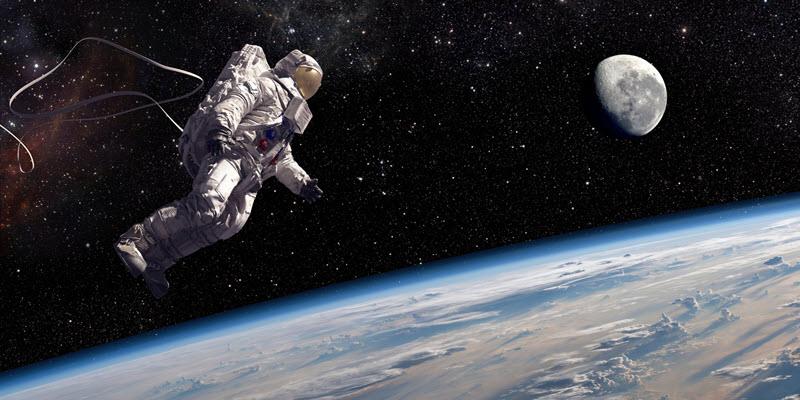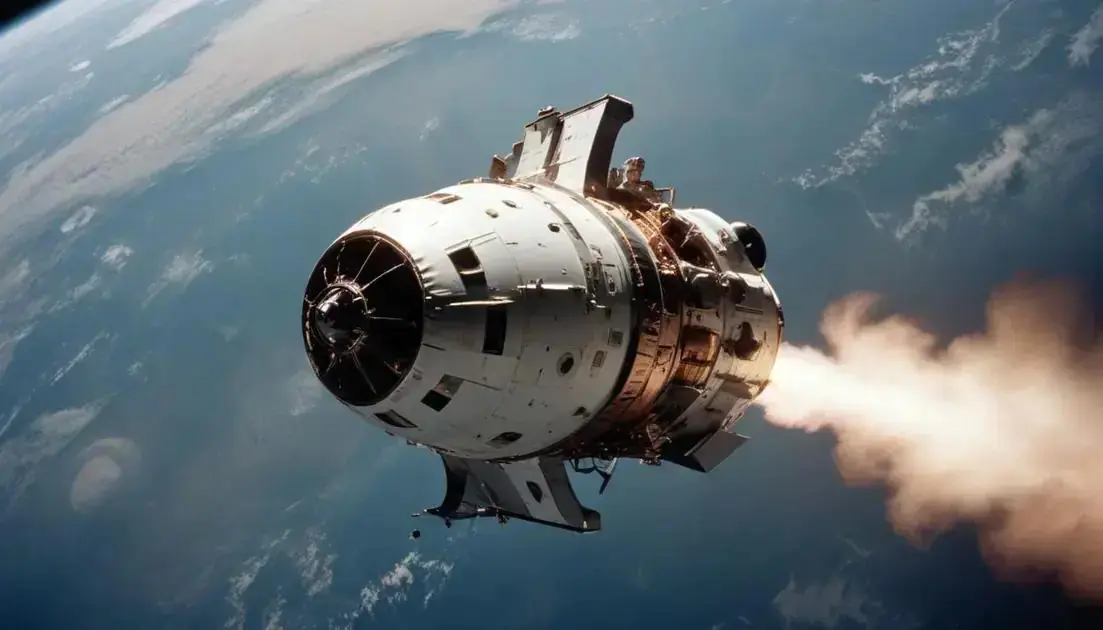
The Story of the First Human Flight and Its Impact on Space Exploration
The first human flight, a seemingly simple act of ascending into the air, irrevocably altered the trajectory of human history. It wasn’t merely a leap forward in technology; it was a monumental shift in human ambition, a testament to our innate curiosity and unwavering drive to explore the unknown. This pivotal event, occurring on November 21, 1783, when Jean-François Pilâtre de Rozier and François Laurent d’Arlandes soared over Paris in a hot air balloon, laid the groundwork for the conquest of the skies and, ultimately, the stars. This essay will delve into the story of this groundbreaking achievement, explore its profound impact on the development of aviation and space exploration, and examine its continuing legacy as we look towards a future brimming with ambitious interstellar voyages.
The Dawn of Aviation: A Paradigm Shift in Human Potential
The Montgolfier brothers, Joseph-Michel and Jacques-Etienne, deserve immense credit for their tireless experimentation that culminated in the first human flight. Their initial experiments with hot air balloons, initially met with skepticism and amusement, quickly captured the public’s imagination. The sight of a large, seemingly impossible contraption effortlessly ascending into the heavens was a spectacle that captivated audiences worldwide. News of their successes spread rapidly, transforming societal perceptions of what was possible. The simple act of human flight challenged centuries of ingrained limitations, inspiring a surge of ingenuity and igniting a global passion for aeronautical innovation. The success of the Montgolfiers’ balloon wasn’t just about the technology; it was a powerful symbol of the potential for human achievement, a demonstration that seemingly insurmountable obstacles could be overcome with creativity, perseverance, and collaborative effort. Their success fueled further research, attracting talented minds from various disciplines, laying the foundation for the next stage in aviation’s evolution – powered flight. The initial flights, though brief and lacking precise control, established the fundamental principle: humans could indeed fly. This initial triumph provided the impetus for subsequent advancements and the relentless pursuit of controlled, sustained flight. It was a spark that ignited a revolution, not only in aviation but in how humanity perceived its own capabilities. The impact extended far beyond the realm of technology, permeating culture, art, and philosophy, forever shaping the human narrative.
The early balloon flights weren’t simply recreational endeavors; they served as crucial stepping stones, paving the way for significant scientific advancements. Meteorologists utilized balloons to gather atmospheric data, revolutionizing weather forecasting. Military strategists recognized the potential for reconnaissance and surveillance, altering warfare strategies. The implications of this new aerial perspective were immediately apparent, influencing everything from cartography to commerce. The first human flight, therefore, wasn’t just a singular event but the beginning of a transformative era, profoundly shaping the course of scientific inquiry, military strategy, and global communication.
From Balloons to Biplanes: The Wright Brothers and the Birth of Powered Flight
The triumph of the hot air balloon, however, was merely a prelude to the next monumental leap: controlled, powered flight. While the Montgolfiers had demonstrated the possibility of human flight, the challenge remained to achieve sustained, maneuverable flight using self-propulsion. This task fell to the Wright brothers, Orville and Wilbur, two bicycle mechanics from Dayton, Ohio. Their meticulous approach, grounded in scientific principles and rigorous experimentation, contrasted sharply with the more intuitive methods of earlier aviation pioneers. Their systematic approach, coupled with their insightful understanding of aerodynamics, proved critical to their success.
The Wright brothers didn’t merely invent an airplane; they meticulously engineered a flying machine. Years of tireless experimentation with gliders allowed them to refine their understanding of lift, drag, and control surfaces. Their innovative contributions, such as the three-axis control system and the warped wings, were crucial to achieving controlled flight. The 12-second flight of the Wright Flyer on December 17, 1903, at Kitty Hawk, North Carolina, was not merely a technological feat; it represented a triumph of human ingenuity and a testament to the power of persistent, dedicated effort. This seemingly modest flight marked the beginning of a new age – the age of powered flight, a development that would indelibly shape global transportation, warfare, and ultimately, space exploration.
The Wright brothers’ achievement went beyond the technological; it was a paradigm shift in human perception. Their flight transcended the realm of scientific achievement, becoming a potent symbol of human potential and the power of relentless pursuit of a dream. Their success inspired a new generation of aviators, engineers, and inventors, fostering a rapid advancement in aviation technology and stimulating a period of unparalleled innovation. The impact of their achievement resonates even today, serving as a powerful reminder of human ingenuity and the importance of unwavering determination.
Breaking the Sound Barrier: A New Frontier in Aviation
The evolution of aviation proceeded at an astonishing pace. The early years witnessed rapid advancements in aircraft design, engine technology, and navigational systems. Air travel transitioned from a daring feat to a relatively commonplace mode of transportation. The development of increasingly powerful engines, lighter materials, and improved aerodynamic designs facilitated greater speed and altitude capabilities. This continuous improvement set the stage for the next monumental achievement: breaking the sound barrier.
On October 14, 1947, Chuck Yeager, piloting the Bell X-1 rocket-powered aircraft, became the first human to surpass the speed of sound, achieving a speed of Mach 1.06. This achievement was not merely a technological marvel; it represented a significant step towards the exploration of space. The technologies developed to achieve supersonic flight—robust airframes capable of withstanding extreme forces, advanced propulsion systems, and sophisticated control systems—proved invaluable in the subsequent development of rockets and spacecraft. The Bell X-1 program served as a crucial proving ground, testing the limits of materials and engineering under extreme conditions, providing invaluable insights that were directly applicable to the challenges of space exploration.
The Dawn of the Space Age: From Aviation to the Cosmos
The technological advancements in aviation, particularly the development of rocket propulsion technology, directly enabled the exploration of space. The launch of Sputnik 1 by the Soviet Union in 1957 marked the official beginning of the Space Age, a pivotal moment that triggered the “Space Race” between the United States and the Soviet Union. This competition, though fueled by geopolitical rivalry, spurred an unparalleled surge in scientific and technological progress, driving advancements in materials science, propulsion systems, life support systems, and communication technologies.
The success of the Soviet Union’s Sputnik program served as a catalyst for the United States’ own space exploration endeavors. The subsequent launch of Explorer 1 in 1958, while a less spectacular event than Sputnik, demonstrated the U.S.’s commitment to catching up and competing in this new arena of technological and geopolitical competition. The Space Race wasn’t merely about national pride; it was a fierce contest of scientific and technological supremacy, driving innovation and pushing the boundaries of human understanding.
The achievements of the early space programs, including the Mercury and Gemini missions, laid the groundwork for the Apollo program. The Apollo 11 mission, culminating in the first human landing on the Moon in 1969, stands as a monumental achievement, a symbol of human ambition and a testament to the power of international collaboration in pursuit of a common goal. The technological prowess demonstrated by the Apollo program had its roots in the incremental advancements achieved in aviation, underscoring the inextricable link between these two fields.
The Enduring Legacy of the First Human Flight: Inspiration and Innovation
The legacy of the first human flight extends far beyond the realm of aviation and space exploration. It has profoundly influenced various aspects of human endeavor, inspiring countless individuals to pursue careers in science, technology, engineering, and mathematics (STEM). The first human flight, along with subsequent aviation milestones, has continuously fueled human curiosity and broadened our understanding of the universe. The pioneering spirit demonstrated by early aviators and astronauts continues to inspire future generations, reinforcing the notion that seemingly impossible feats can be achieved through dedication, innovation, and collaboration.
The connection between aviation and space exploration remains deeply ingrained. Many technologies developed for aviation, such as high-performance materials, advanced propulsion systems, and sophisticated control systems, found direct application in spacecraft design and construction. The experience gained in designing, building, and operating aircraft proved invaluable in the development of spacecraft, laying the foundation for many successful space missions. This synergy between aviation and space exploration highlights the power of transferable knowledge and the importance of cross-disciplinary collaboration in achieving ambitious goals.
The Future of Flight and Space Exploration: New Horizons and Challenges
The future of flight and space exploration presents both incredible opportunities and daunting challenges. Technological advancements such as electric propulsion, advanced materials, and artificial intelligence are poised to revolutionize both aviation and space travel. Private companies, such as SpaceX, Blue Origin, and Virgin Galactic, are playing an increasingly significant role, pushing the boundaries of innovation and challenging traditional models of space exploration. Their innovative approaches, coupled with government support and international collaboration, offer the promise of a new era of space exploration, one characterized by increased accessibility and ambitious goals.
The establishment of a permanent human presence on the Moon and Mars, once relegated to the realm of science fiction, is now within reach. However, the journey to these destinations requires overcoming substantial hurdles, including developing advanced life support systems, efficient propulsion systems, and effective strategies for resource utilization. Furthermore, ensuring the safety and well-being of astronauts during long-duration space missions poses significant challenges. Addressing these challenges requires a continued investment in research and development, as well as a commitment to fostering international collaboration.
The Role of Government and Private Partnerships: A Synergistic Approach
The success of both aviation and space exploration hinges on a robust partnership between government agencies and private industry. Government agencies, such as NASA, ESA, and JAXA, play a crucial role in funding fundamental research, conducting space missions, and setting strategic goals. Private companies, on the other hand, bring innovative approaches, entrepreneurial spirit, and the capacity for rapid development and deployment of technologies. This synergistic relationship, characterized by shared resources and complementary expertise, is essential for maximizing efficiency and achieving ambitious goals. The first human flight was a testament to this collaborative spirit, underscoring the power of collective endeavor. The current landscape of space exploration increasingly demonstrates the effectiveness of this collaborative model, highlighting its potential for accelerating progress and driving innovation.
Educating the Next Generation of Explorers: Investing in the Future
Inspiring and educating the next generation of explorers is paramount to the continued advancement of aviation and space exploration. Investing in STEM education, promoting scientific literacy, and fostering a culture of curiosity are essential for cultivating a new generation of scientists, engineers, and innovators. The legacy of the first human flight, and the subsequent milestones in aviation and space exploration, must serve as a constant source of inspiration, motivating young people to pursue careers in these fields. This requires a multi-faceted approach, involving educational institutions, government agencies, private companies, and the broader community. By fostering a culture of innovation and emphasizing the importance of exploration, we can ensure the continued advancement of human knowledge and the pursuit of new horizons.
Conclusion: Reaching for the Stars, Building on the Past
The first human flight, a seemingly simple event in 1783, stands as a cornerstone of human progress. Its impact ripples through time, connecting the early days of hot air balloons to the current ambitions of establishing human settlements on other planets. The journey from the initial, tentative flights to the sophisticated spacecraft that are now exploring our solar system represents a remarkable testament to human ingenuity, collaboration, and unwavering ambition. The legacy of the first human flight serves as a powerful reminder that seemingly insurmountable obstacles can be overcome through dedication, perseverance, and the relentless pursuit of knowledge. As we embark on an era of unprecedented exploration, building upon the foundations laid by those who came before us, let us remember that the sky—and beyond—is no longer the limit, but merely the beginning of an extraordinary journey.


